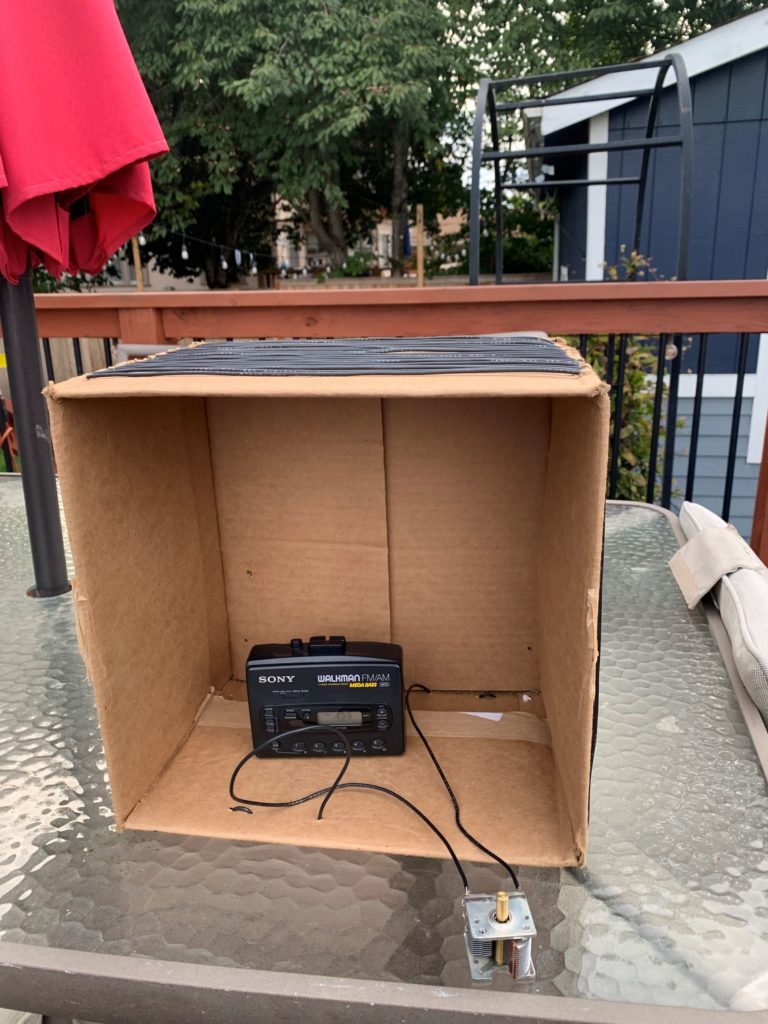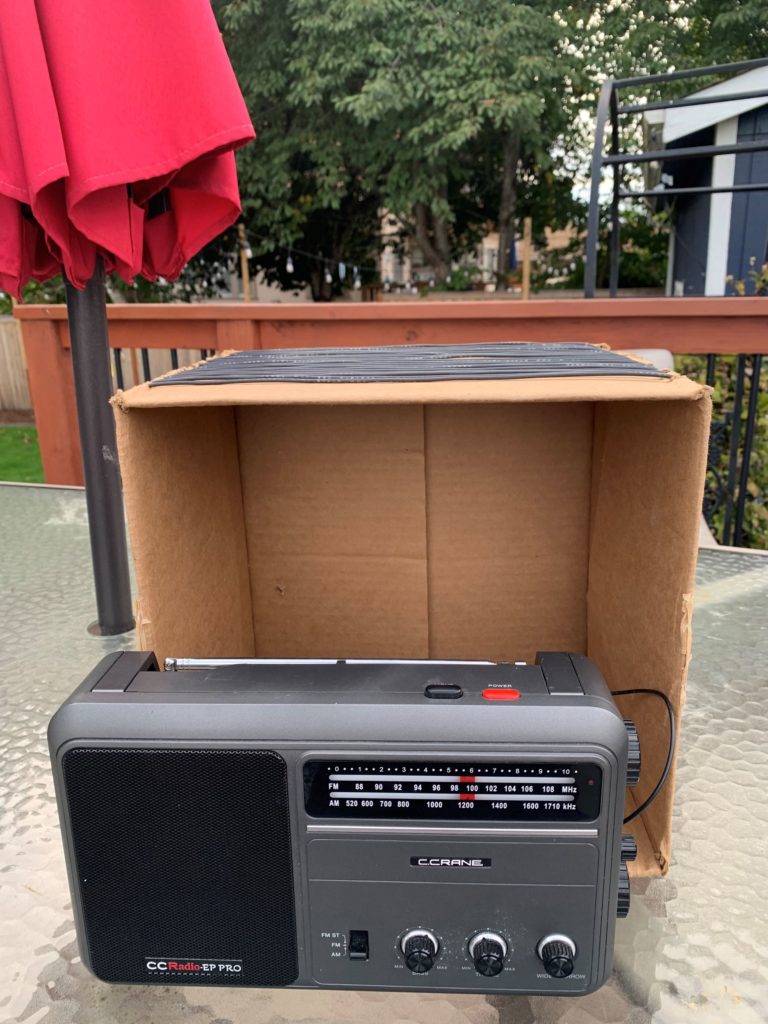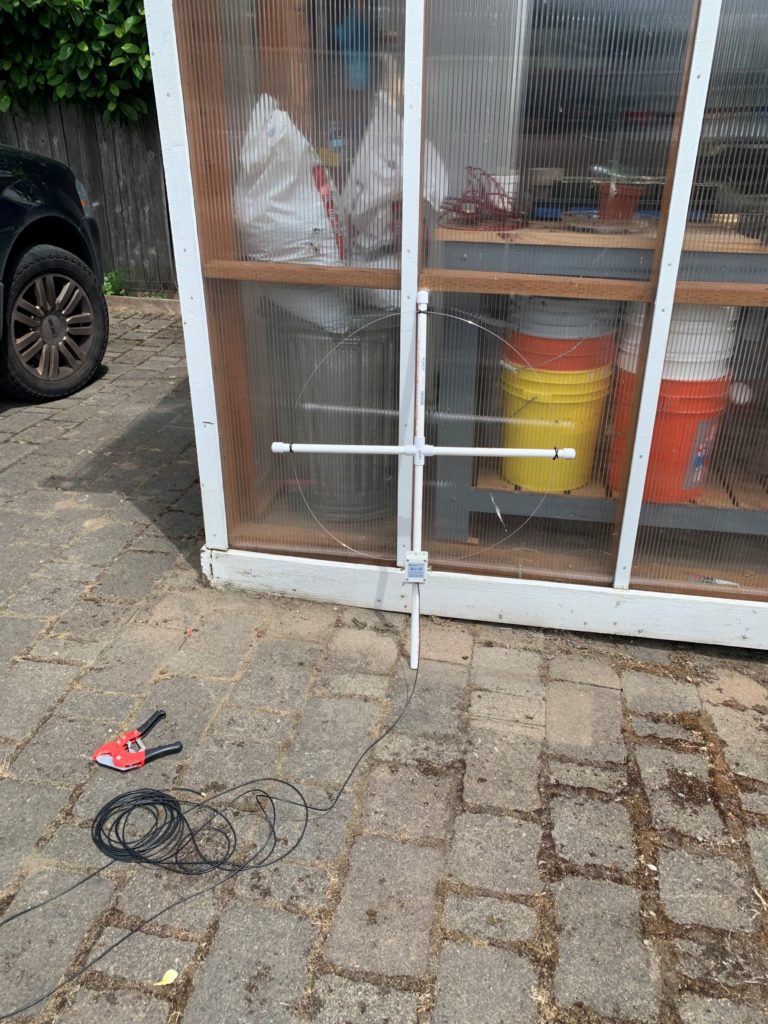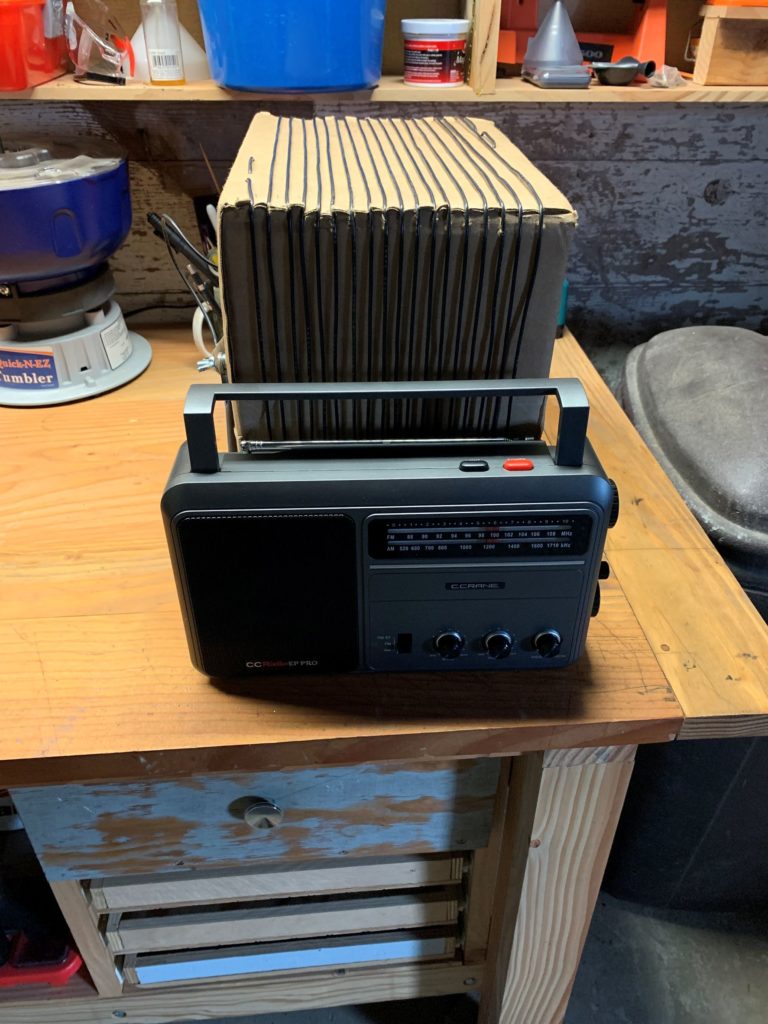Two worlds are colliding. The clean-up of the basement and my commitment to not leave things hanging have finally met. I wanted to get rid of this wire wrapped box that I have been hanging on to for almost two years now. But, I couldn’t get rid of it until I finally completed the modifications that I wanted to make.
One of the suggestions on my YouTube video was that my capacitor was not adequate. If you remember, it was an Aluminum foil wrapped card inside of an envelope. One of those was sandwiched between two others. The paper of the envelope acted as an insulator for the conductors and in theory, sliding the envelope back and forth was the fine tuning of the antenna.
I purchased an air capacitor that I see commonly used on DIY antenna videos. The plan was to replace the envelope capacitors with this relatively expensive component ($35) and hopefully this would be the trick. After the part arrived from Germany, I set about with this new round of experiments.


I decided to take what I thought was my worst AM tuner (an old Walkman… how about that) and the best AM tuner, my CCrane radio and test them outside and inside of the box. With the device inside the box, I would mess with the capacitor to see if there was any improvement in reception. Interestingly enough, the CCrane radio also has antenna inputs, so I tried that as well.
First of all, I will remind you that AM reception is directional. As far as I am concerned, I saw zero impact with respect to reception inside versus outside the box of either radio. It also appeared that any fiddling with the capacitor made no change to the reception. Orientation of the box with respect to the transmission tower did make a difference, but again there was no difference the radio itself.
What conclusion can I draw from this whole thing? The only thing that I can say conclusively is that this box antenna has no effect on reception. As a result I broke the whole thing down so that I could continue with my rampage of cleanup. I very well may try this again, but this time with different wire.
The wire I purchased was Aluminum at the second hand store. I wonder if changing from an insulated wire to a non-insulated one might help pick up signals. Buying a nice, new spool of wire kind of violates my principal of making this cheap or out of junk. To really get this dialed in on what components will work requires it to work in the first place. I just didn’t see that.
I don’t offer this enough, but if someone sees what I am doing wrong, by all means help me out. Now that I have outlaid the cash for a commercial antenna, I really don’t have any drive to put anymore energy into this endeavor. It is a good idea to learn from failure though.
End Your Programming Routine: When I first ran across the plans for this antenna, I had visions of young kids scavenging materials to gather around the radio and listen to a soccer game in some third world country. It may be that I don’t know what I don’t know but if that is the case, then this project is much more precise than I gave it (and I thought I followed the instructions to the letter). To be fair, I don’t have a full grasp of the science of antennas so it is possible that this can work, I have to say that my experience says it is not worth the time.




Recent Comments